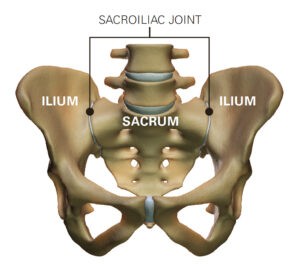The sacroiliac joint fusion market is projected to witness significant growth in the forecast period, owing to the rising prevalence of sacroiliac joint dysfunction, which is a common cause of lower back pain. Sacroiliac joint fusion is a surgical procedure that fuses the sacrum and the iliac bone to stabilize the joint and reduce pain. The procedure is gaining traction due to its effectiveness in providing long-term relief from lower back pain. Moreover, technological advancements in sacroiliac joint fusion techniques and the development of minimally invasive procedures are expected to further boost the adoption of this procedure.
Another factor driving the growth of the sacroiliac joint fusion market is the increasing preference for non-surgical treatment options for sacroiliac joint dysfunction. However, with the advancement of sacroiliac joint fusion techniques, the procedure is increasingly being preferred as a more effective and long-term solution. Additionally, the increasing awareness of sacroiliac joint fusion as a treatment option and the availability of favorable reimbursement policies by insurance providers for the procedure are expected to further drive the growth of the market.
𝗗𝗼𝘄𝗻𝗹𝗼𝗮𝗱 𝗙𝗿𝗲𝗲 𝗕𝗿𝗼𝗰𝗵𝘂𝗿𝗲 @ https://www.factmr.com/connectus/sample?flag=B&rep_id=7164
According to Fact.MR, The global sacroiliac joint fusion market size is estimated at US$ 620 Mn in 2022 and is likely to reach US$ 3,900 Mn by 2032. The market is expected to witness a CAGR of 20.2% during the forecast period from 2022 to 2032.
Geographically, North America dominates the sacroiliac joint fusion market, owing to the presence of a large patient pool suffering from sacroiliac joint dysfunction, favorable reimbursement policies, and advanced healthcare infrastructure. Europe is also expected to witness significant growth in the sacroiliac joint fusion market due to the growing demand for minimally invasive surgical procedures and the increasing adoption of advanced medical technologies. The Asia Pacific region is also expected to witness substantial growth due to the increasing healthcare expenditure, rising awareness of sacroiliac joint dysfunction, and the availability of advanced medical facilities.

Emerging Trends in Sacroiliac Joint Fusion
Some of the emerging trends in sacroiliac joint fusion include the development of new surgical techniques and devices to improve the outcomes of the procedure. For instance, some companies are now developing sacroiliac joint fusion systems that utilize 3D-printed titanium implants, which can provide better stability and faster bone fusion. Other companies are developing minimally invasive surgical techniques, which can reduce post-operative pain and shorten hospital stays.
Another emerging trend is the use of biologic materials in sacroiliac joint fusion. These materials can help promote bone growth and fusion, which can improve the long-term outcomes of the procedure. For example, some companies are developing bone graft substitutes that contain stem cells, which can accelerate bone healing and fusion.
Lastly, the use of navigation systems during sacroiliac joint fusion is also an emerging trend. These systems can help improve the accuracy and precision of the procedure, which can lead to better outcomes and reduced complications. Navigation systems can also help guide surgeons during minimally invasive procedures, which can be more challenging due to the limited visibility.
Which Indication of Sacroiliac Joint Fusion is likely to dominate?
It’s difficult to predict which indication of sacroiliac joint fusion will dominate as different indications may have varying levels of prevalence and severity among patients. However, according to some studies, sacroiliac joint dysfunction is a common cause of low back pain, affecting up to 30% of patients with chronic low back pain. As a result, sacroiliac joint fusion for the treatment of sacroiliac joint dysfunction may continue to be an important indication for the procedure. Additionally, sacroiliac joint fusion may also be indicated for patients with degenerative sacroiliitis, sacroiliac joint trauma, or sacroiliac joint infection. Ultimately, the choice of indication for sacroiliac joint fusion will depend on the individual patient’s diagnosis, symptoms, and medical history.
Key Companies Profiled
- SI-BONE Inc.
- PainTEQ
- CornerLoc
- SIGNUS Medizintechnik GmbH
- Globus Medical
- Orthofix Medical Inc.
- Life Spine Inc.
- Camber Spine Technologies LLC
- CoreLink Surgical
- Xtant Medical
- Surgalign Spine Technologies Inc.
- Medtronic Plc.